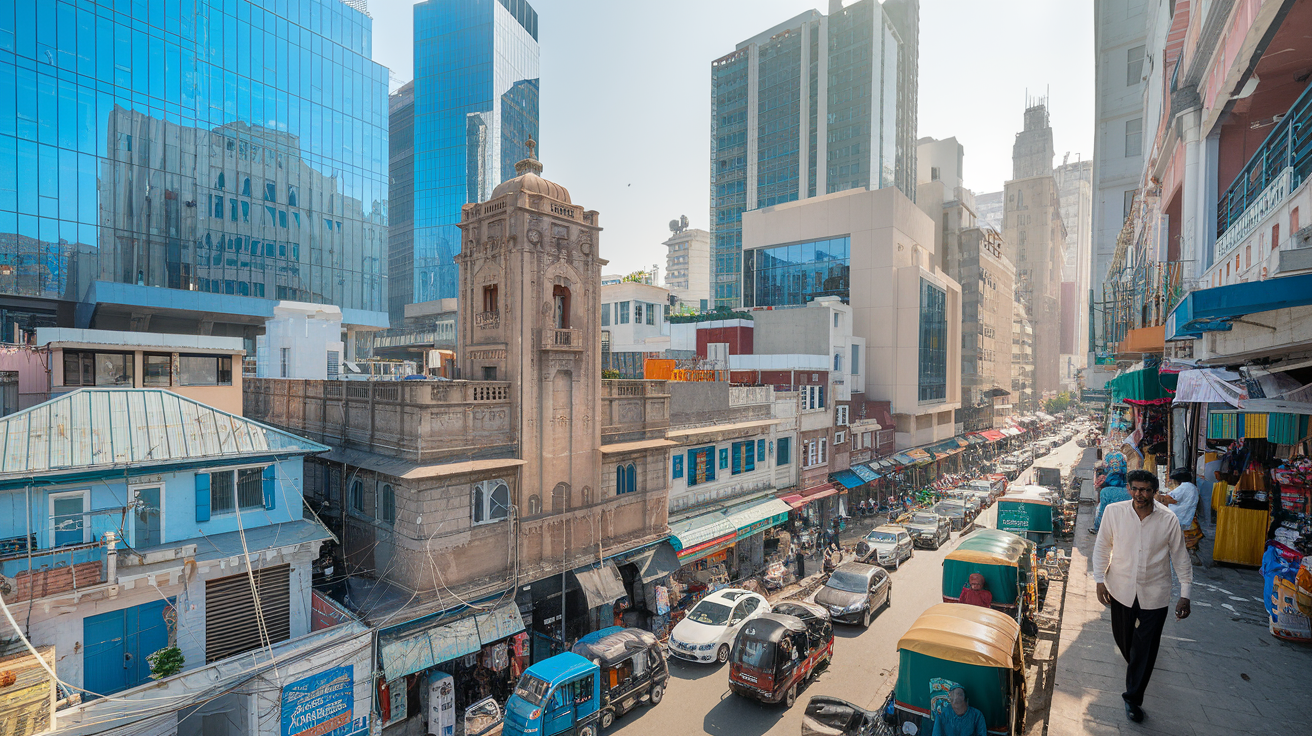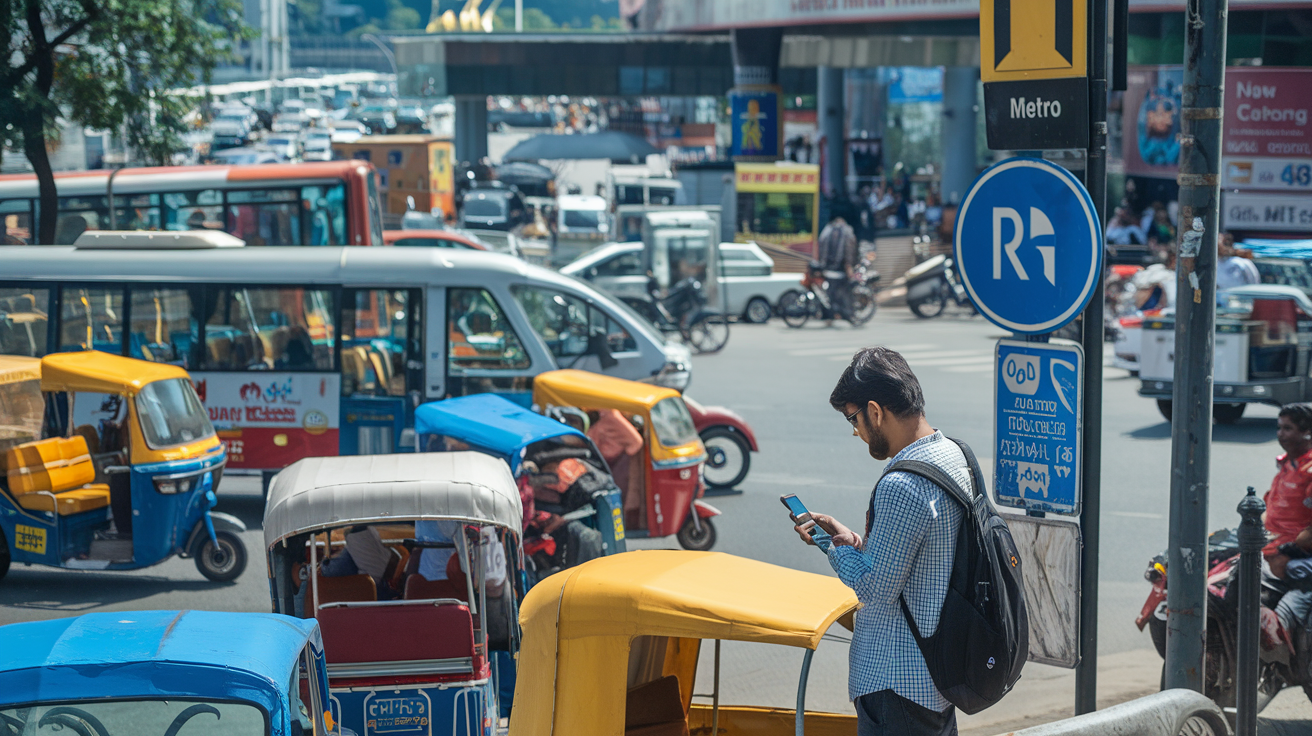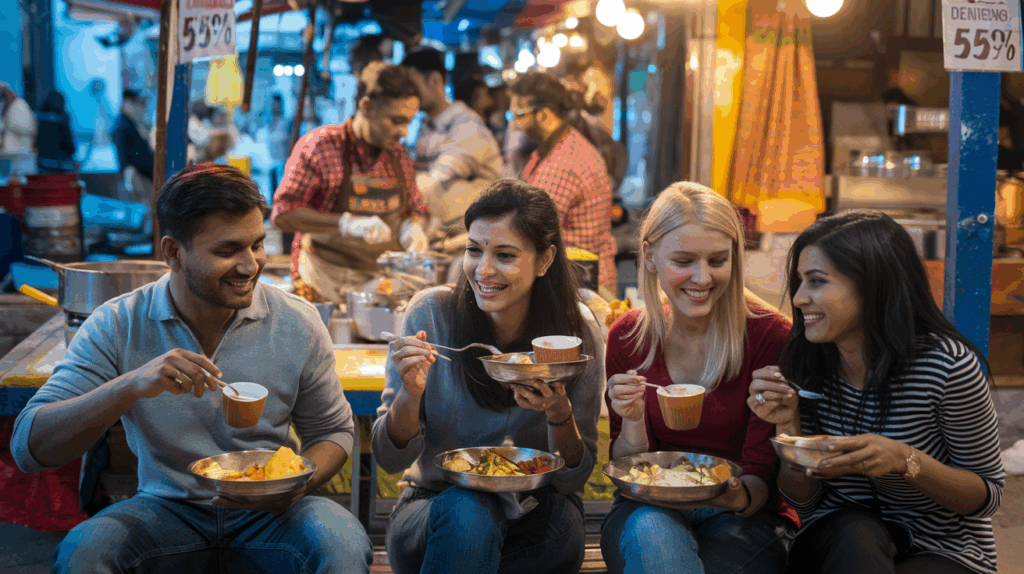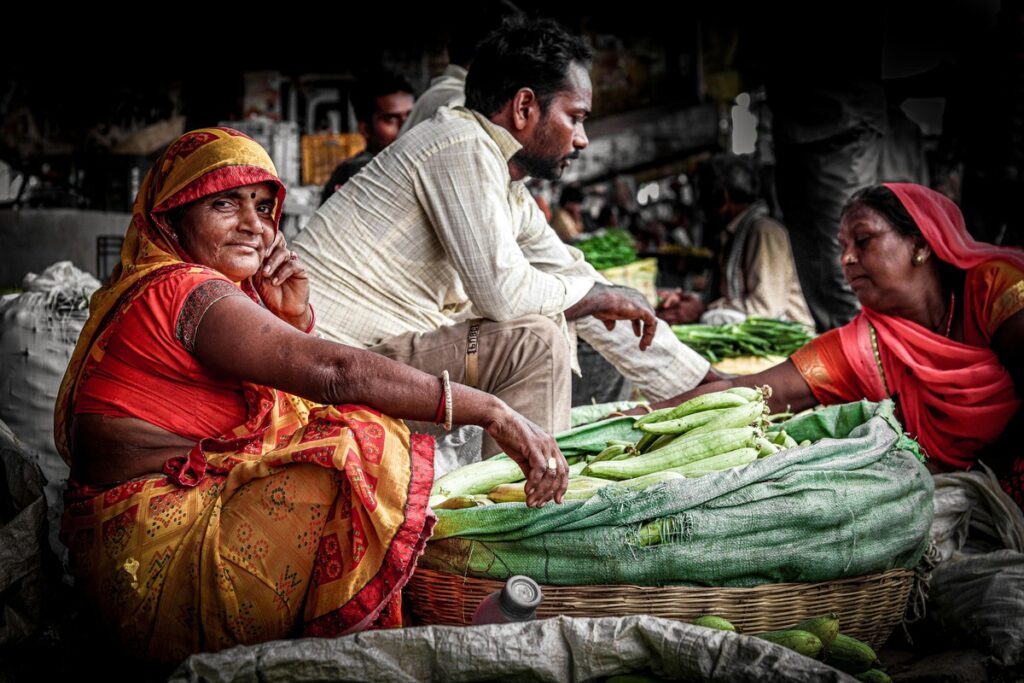Ever stood at a Mumbai intersection where traffic seems to follow the laws of quantum physics rather than actual road rules? Welcome to Indian cities, where chaos isn’t just part of life—it’s an art form.
The average first-time visitor to India spends approximately 72 hours cycling through bewilderment, frustration, and finally, reluctant admiration for how 1.4 billion people navigate urban pandemonium daily.
This survival guide to India’s chaotic cities will transform you from overwhelmed tourist to confident explorer in less time than it takes a rickshaw driver to honk their horn (which is approximately every 2.7 seconds, by the way).
Forget everything you know about personal space, queuing, and traffic signals. The rules are different here, and once you learn them, you’ll discover why seasoned travelers keep coming back for more.
But first, let me tell you about the mistake nearly every foreigner makes on day one—and why it almost guarantees a disastrous start.
Understanding India’s Urban Landscape

A. Decoding the Controlled Chaos
Indian cities aren’t just crowded—they’re living, breathing organisms with their own rules. That chaos you see? It’s actually a finely-tuned system that somehow works.
Picture this: honking isn’t road rage—it’s communication. That constant beeping you hear is drivers saying “I’m here” or “I’m passing.” Once you crack this code, the madness starts making sense.
The sidewalks (if they exist) aren’t just for walking. They’re marketplaces, meeting spots, and sometimes even bedrooms. Personal space? That concept gets redefined here. What looks like disorder to foreign eyes is actually an intricate dance locals have mastered since childhood.
B. Major Cities and Their Unique Challenges
Each Indian metropolis throws different curveballs at you:
Mumbai hits you with crushing crowds and insane real estate prices. The local trains? Packed beyond imagination. But Mumbaikars have this remarkable resilience—they’ll squeeze you in and then offer directions.
Delhi tests your lungs with its pollution and your patience with its sprawl. The city is massive, which means getting anywhere takes forever. But beneath the smog lies incredible history and the country’s best street food.
Bangalore traps you in legendary traffic jams. A 5-mile journey might take two hours, no joke. Tech bros and traditionalists share the same clogged roads.
Kolkata slows everything down to its own nostalgic pace. The challenge? Adapting to a rhythm that refuses to be rushed.
C. Cultural Nuances That Shape Urban Life
Indian cities operate on relationship currency. Cold transactions aren’t the norm here—people remember faces, share tea, and build connections.
Religion shapes daily urban rhythms more than you’d expect. That morning traffic jam? Might be because of a temple procession. The sudden quiet afternoon? Probably prayer time.
The hierarchy is real but invisible to outsiders. Age, education, wealth, and family name create subtle power dynamics you’ll only notice after spending time here.
D. The Rhythm of Indian City Life
Indian cities never sleep—they just change gears.
Morning starts with street vendors setting up, the smell of chai, and temple bells. Midday brings the impossible heat that slows everything down. Evening explodes with energy as markets fill and families emerge for shopping and socializing.
Night transforms cities again—street food stalls become community hubs, and parks fill with youngsters seeking privacy.
The yearly rhythm follows festival seasons that transform entire neighborhoods overnight. A quiet street can become an explosion of colors, lights, and celebration without warning.
You can’t fight these rhythms—the smart travelers sync with them. Rush hour is 9-11 AM and 5-8 PM. Plan accordingly or suffer. Religious holidays can shut down entire districts or create massive celebrations—check the calendar before making plans.
For ideas on touring India on a motorcycle, visit 5 senses motorcycle tours.
Navigating Transportation Options

A. Mastering the Art of Auto-Rickshaw Negotiation
Those three-wheeled yellow-and-black beasts are everywhere in Indian cities, and they might just save your day. But here’s the thing – you’ll get ripped off if you don’t know the game.
First, always agree on a price before getting in. Always. Not doing this is basically handing over your wallet.
When negotiating, start at about half the price they quote. They’ll look offended. That’s normal. Meet somewhere in the middle and you’ll both feel like winners.
Got a smartphone? Download Ola or use the auto option on Uber. The prices are fixed, which saves you the whole haggling dance when you’re just too tired.
And remember this golden rule: locals pay ₹X, tourists pay ₹X×2. It’s not personal – it’s just business.
B. Surviving Public Transit: Buses and Metros
The metro systems in Delhi, Mumbai, Bangalore and other major cities? Pure magic compared to the road chaos. They’re clean, air-conditioned, and they actually follow schedules!
Women travelers, look for the women-only cars – they’re usually the first or last car of the train. Trust me, during rush hour, you’ll thank me for this tip.
City buses are dirt cheap but not for the faint-hearted. They rarely stop completely – it’s more of a slow-down-and-jump situation. And personal space? That concept doesn’t exist here.
Pro tip: Google Maps works surprisingly well for public transit routes in most Indian cities. Screenshot the route before heading out in case your data decides to bail on you.
C. When to Use Ride-Sharing Apps
Uber and Ola have changed the game in Indian cities. When should you splurge on them?
• Late at night (safety first)
• When it’s raining (auto drivers suddenly “forget” how to use meters)
• When you’re carrying luggage
• When you’re just plain exhausted from negotiating
The downside? Traffic jams. During peak hours, you might watch an entire Netflix series while getting across town.
D. Walking Smart: Pedestrian Strategies
Walking in Indian cities is an extreme sport. Sidewalks appear and disappear without warning. Vehicles consider pedestrian crossings as decorative road features.
Walk like a local – confidently and predictably. Make eye contact with drivers. That tiny head wobble you get in return means “I see you, I won’t hit you.”
Early mornings are magical for exploring on foot. The cities wake up slowly, giving you breathing room before the daily madness begins.
E. The Two-Wheeler Advantage

Renting a scooter or motorcycle might seem insane given the traffic, but it’s actually genius for short distances.
Apps like Bounce and Vogo let you rent scooters by the hour in many cities. Just please, please wear a helmet even if nobody else is.
The real advantage? You can squeeze through traffic jams that would keep cars stuck for hours. Just follow the flow of local riders – they know every shortcut and secret passage in the city.
Street Food and Dining Safety
Must-Try Dishes Without Digestive Distress
Indian street food is a wild playground of flavors, but nobody wants their adventure cut short by a rebellious stomach. Here’s how to enjoy the good stuff without the aftermath:
- Freshly cooked flatbreads: Piping hot naan, roti and parathas are usually safe bets since high cooking temperatures kill most bacteria.
- Masala chai: Tea is boiled thoroughly, making it one of the safest drinks on the street.
- Roasted items: Seek out tandoori dishes, grilled corn (bhutta), and roasted nuts where heat has eliminated most pathogens.
- Dry snacks: Packaged items like bhel puri assembled right in front of you with dry ingredients typically pose minimal risk.
Skip anything that looks like it’s been sitting out for hours. That gorgeous display of sweets? Probably been collecting dust (and flies) since morning.
Pro tip: Start with small portions when trying new foods. Your taste buds might be ready for that extra-spicy pani puri, but your stomach needs time to adjust to the local cuisine.
Water and Hygiene Precautions
The tap water in Indian cities isn’t playing on your team. Here’s your game plan:
- Bottled water is your new best friend – check the seal is intact before purchasing
- Say “no thanks” to ice in drinks unless you’re at higher-end establishments
- Forget about raw salads and unpeeled fruits unless you’ve washed them yourself with filtered water
- Carry alcohol-based hand sanitizer everywhere – use it before every meal
- Wet wipes are non-negotiable essentials for quick hand cleaning when water isn’t available
Remember that brushing your teeth with tap water is also risky business. Use bottled water even for this seemingly innocent activity.
Many travelers swear by taking probiotic supplements for a week before their trip to build up gut resistance. Not scientific magic, but many swear it helps.
Identifying Safe Street Vendors

Eating Well Without Breaking the Bank
Not all food carts are created equal. Your food detective skills need to be on point:
- Watch where locals eat – especially families with children and office workers
- Busy stalls with high turnover mean fresher food and better odds
- Look for vendors who handle food and money separately (or have someone else handle payments)
- Cleanliness matters – observe their work area, utensils and personal hygiene
- Food should be cooked right in front of you, not pre-prepared and reheated
Trust your gut (literally). If something feels off about a vendor or their setup, walk away. There’s always another delicious option around the corner in India’s food paradise.
The riskiest time for street food? Late night, when leftover food might be recycled and prep surfaces haven’t been cleaned for hours.
Accommodation Strategies
Neighborhoods Worth Considering
The chaos of Indian cities hits different depending on where you lay your head. Trust me on this one.
In Delhi, check out Defence Colony or Greater Kailash if you’ve got some cash to splash. They’re cleaner, safer, and have reliable power (a godsend when it’s 45°C outside). For budget travelers, Paharganj near the railway station works, but brace yourself—it’s full-on India.
Mumbai’s neighborhoods tell you exactly what you’re getting. Bandra West? Hipster cafes and celebs in sunglasses. Colaba? Tourist central but genuinely charming. Andheri? Business folks and decent bang for your buck.
In Bangalore, Indiranagar and Koramangala win for digital nomads and expats. They’ve got fiber internet, craft beer, and enough English speakers that you won’t feel completely lost.
One rule applies everywhere: walk the neighborhood before committing. That quiet street might host a 5 AM temple ceremony or late-night wedding festivities.
Security Features to Look For
Indian accommodations vary wildly in security. Don’t compromise here.
Look for:
- 24-hour security guards (who are actually awake)
- Working locks on all doors AND windows
- Gated communities or buildings with limited access
- Iron grilles on ground floor windows (they’re not pretty, but they work)
- CCTV coverage of common areas
Skip places with constant staff turnover or gates left open. Many travelers regret choosing charm over security.
Noise Management Techniques
Indian cities never sleep. They don’t even nap.
Your survival toolkit should include:
- Quality earplugs (silicone beats foam)
- White noise machine or app
- Heavy curtains that actually close fully
- A fan (doubles as white noise)
- Window sealing tape for those tiny gaps
Pro tip: upper floors are usually quieter, but check if there’s a rooftop venue first. Nothing worse than discovering your ceiling is someone else’s dance floor at 1 AM.
Building Community in Your Area
Isolation makes chaotic cities harder to handle. You need allies.
Start with your immediate neighbors. A simple “namaste” goes miles. Accept that first chai invitation even if you’re tired—it establishes you as friendly, not foreign.
Join Facebook expat groups for your city. They’re goldmines for recommendations and warnings about local scams.
Find a regular spot—café, park bench, street food stall. Becoming a “regular” somewhere provides stability in the chaos. The chai wallah who knows your order becomes your first local friend.
Take a language class. Even basic Hindi phrases earn respect and better service. Plus, classmates become instant companions in your urban adventure.
Managing Daily Interactions

A. Bargaining Without Causing Offense
Look, bargaining is part of the game in India. But there’s a fine line between getting a good deal and being disrespectful. Start by offering about 40-50% of the asking price, then work your way up. The vendor expects this dance.
Don’t get aggressive or impatient – that’s the quickest way to ruin the experience. Smile, keep it light, and be prepared to walk away. Often, that’s when the real price drops happen.
Remember this golden rule: if you’re arguing over what amounts to pocket change for you but could be a meal for the seller, just pay up. Your “victory” isn’t worth their livelihood.
B. Handling Persistent Hawkers and Touts
These folks are just trying to make a living in a competitive environment. A firm “no thank you” while continuing to walk usually works. Don’t make eye contact if you’re definitely not interested.
For the super-persistent ones, try saying “maybe later” and specifically mentioning where your hotel is. They’ll often leave you alone, thinking they can catch you another time.
Got a tout who won’t quit? Duck into a shop or restaurant for a few minutes. They rarely follow you inside, and they’ll move on to other prospects.
C. Overcoming Language Barriers
English gets you pretty far in Indian cities, but learning a few basic phrases in Hindi or the local language works wonders:
- “Dhanyavaad” (thank you)
- “Kitna?” (how much?)
- “Thoda kam” (a little less)
Your phone is your best friend here. Download Google Translate with Hindi offline. Take screenshots of your hotel address in both English and Hindi to show drivers.
Visual communication saves lives. Point, gesture, draw, use calculator apps for prices. Indians are incredibly adaptable communicators – meet them halfway.
D. Understanding Personal Space Differences
The concept of personal space in India is… flexible. You’ll be shoulder-to-shoulder in markets, trains, and sidewalks. Breathe through it. This isn’t rudeness – it’s just different spatial norms.
In queues, stand closer than feels natural or someone will slip in front of you. It’s not cutting – it’s just how queues work here.
Women travelers: carry a scarf or shawl for crowded situations. It creates a subtle barrier and doubles as modest coverage for temple visits.
E. Dealing With Unexpected Attention
You will get stared at. You’ll get asked for selfies. This isn’t necessarily threatening – many Indians are simply curious about foreigners.
For photos, decide your boundary. If you’re uncomfortable, a firm “no photos please” works. If you’re game, limit it to one quick pic or you might end up posing with an entire extended family.
When kids practice their English with you, it’s usually genuine curiosity. A quick conversation can be the highlight of their day – and possibly yours too.
Health and Wellness Tactics
Air Quality Survival Tools
Indian cities often rank among the most polluted in the world, and I’m not sugarcoating it – the air can be brutal. On bad days in Delhi or Mumbai, breathing feels like you’ve taken up chain-smoking overnight.
Smart travelers pack these essentials:
- N95 or N99 masks (not those flimsy surgical ones)
- A reliable air quality app (AirVisual or BreezoMeter)
- Portable air purifier for your accommodation
- Nasal saline spray to flush out pollutants
The trick is checking AQI (Air Quality Index) daily like you’d check the weather. Above 150? Mask up. Above 300? Seriously consider indoor activities.
One traveler told me: “I thought people were overreacting about Delhi’s air until I blew my nose and the tissue turned black.” Gross but true.
Staying Hydrated Safely
The fastest way to ruin your India adventure is drinking from the wrong tap. Just don’t.
Your hydration gameplan:
- Bottled water with sealed caps only
- Water purification tablets as backup
- Electrolyte packets (lifesavers in summer heat)
- Avoid ice in street drinks (made with tap water)
Remember this rule: “Boil it, cook it, peel it, or forget it.” That coconut water served in its natural container? Perfect. That tempting fresh-squeezed juice with ice? Potential disaster.
The dehydration risk in India’s cities is no joke with temperatures hitting 40°C (104°F). Aim for 3-4 liters daily, more if you’re exploring on foot.

Managing Noise and Sensory Overload
Indian cities assault all your senses at once. The constant honking alone can drive you mad.
Sanity-saving strategies:
- Noise-canceling headphones (worth every rupee)
- Schedule daily “quiet time” at parks or temples
- Book accommodations on higher floors away from main roads
- Learn the art of the “thousand-yard stare” when salespeople approach
Sensory overwhelm hits everyone eventually. When it does, find an AC café, order chai, and take a breather. No shame in retreating to recharge.
Emergency Healthcare Access
Even careful travelers get sick. Knowing where to go prevents panic.
Keep handy:
- Apollo Hospitals locations (reliable private hospital chain)
- Your travel insurance emergency number
- Local pharmacy terms (“Medical Shop” in India)
- Basic Hindi medical phrases
For serious issues, private hospitals in major cities offer excellent care. For minor problems, pharmacists can recommend medications without prescriptions.
Smart travelers set up WhatsApp with their home doctor before leaving. A quick video call can help determine if that stomach pain needs emergency care or just probiotics.
Embracing the Urban Adventure
Finding Peace in Chaos
Indian cities hit you with a sensory overload that can feel like too much. The secret? Don’t fight it.
I’ve learned to carve out mini-breaks throughout the day. Those 10 minutes sipping chai at a corner stall? Pure gold. The locals do this instinctively – they create personal bubbles in the middle of madness.
Try this: wake up 30 minutes earlier than needed. Use that time to walk around your neighborhood when the streets are still stretching awake. The difference between a 7am and 9am Delhi is like comparing a whisper to a rock concert.
When things get overwhelming (and they will), duck into any nearby temple. Most Indian cities have them scattered everywhere, and they serve as instant calm zones. Nobody will question you sitting quietly for 15 minutes.
Connecting With Locals Meaningfully
Forget the tourist-local barrier. It crumbles faster than you’d think.
My most authentic experiences came from simple questions: asking a street vendor which item he eats after his shift ends, or complimenting someone’s regional accent. Curiosity opens doors that tourist dollars never will.
Learn these phrases in the local language:
- “Is this your hometown?”
- “What’s your favorite festival?”
- “Where would you take your family to eat?”
Small shops beat big markets for genuine connections. I’ve been invited to family dinners after becoming a “regular” at tiny establishments within just days. Show up, remember names, and express genuine interest in lives different from yours.
Developing City-Specific Skills
Each Indian city demands its unique survival toolkit.
In Mumbai, master the local train system’s unspoken rules (always move inward, never block doors). For Delhi, develop an assertive-but-not-aggressive bargaining style. In Kolkata, learning basic Bengali phrases works magic that English never will.
City-specific transport apps save sanity. Forget international options – download Ola for cabs, Rapido for bike taxis, and city-specific metro apps.
The most crucial skill? Adaptability. The traffic rules you mastered in Bangalore become useless in Jaipur. The street food approach that worked in Chennai might fail in Lucknow.
For immersive culture walks in India, visit 5 senses walks.
Creating Your Urban Oasis

Every traveler needs a sanctuary amid the beautiful chaos.
I create mine by finding “regular spots” within my first week. That peaceful rooftop café in Udaipur, the quiet corner of Lodhi Gardens in Delhi, or the seaside promenade bench in Mumbai – these become your recharge stations.
Convert your accommodation into a personal haven. Even budget guesthouses transform with small additions – a portable speaker playing familiar music, a scented candle, or simply rearranging furniture to create more space.
The urban chaos of India stops feeling overwhelming when you have reliable retreat points. Think of them as your game’s save points before venturing back into the beautiful mayhem.
Navigating India’s vibrant urban centers requires adaptability, patience, and a sense of adventure. From mastering the transportation maze to finding safe accommodation options, being prepared makes all the difference. Remember to approach street food with caution, maintain wellness routines, and develop effective communication strategies for daily interactions.
Armed with these survival tips, you’re ready to transform potential chaos into an enriching cultural experience. Rather than feeling overwhelmed, you’ll discover the hidden rhythms and unexpected joys of India’s cities. Embrace the adventure, respect local customs, and allow yourself to be transformed by the beautiful complexity that defines urban India.
If you are looking for ideas on budget travel, visit How to travel India on a shoestring budget.
Discover more from Great Holiday Ideas
Subscribe to get the latest posts sent to your email.